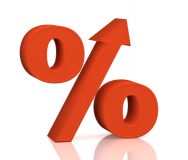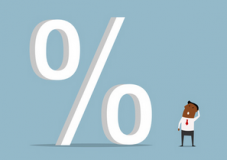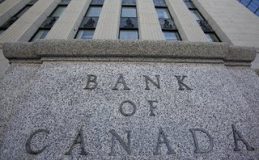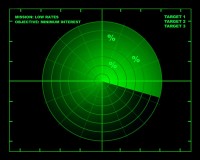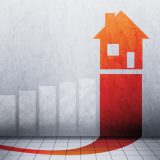By The Spy on
November 10, 2017
Canada’s new “B-20” mortgage stress test will be a tectonic shift for the roughly 1 in 6 borrowers it affects, starting January 1. It’s going to force higher-indebted creditworthy borrowers to either: reduce their loan amount, seek help qualifying (e.g., find a bigger down payment or co-signor), defer their homebuying plans, or seek out a non-bank lender, like a credit...
read more
By The Spy on
October 17, 2017
Scotiabank’s out with a new prediction. The nation’s #3 mortgage lender says rising rates will cause average mortgage carrying costs for new buyers tojump8% in 2018 and another 4% in 2019 (assuming stable home prices). “Further rule changes, including more stringent stress tests for uninsured mortgages…would exert additional drag on new buyers,” the bank noted. Existing mortgage holders, whom the...
read more
By The Spy on
September 1, 2017
It’s been seven weeks since the Bank of Canada beganits first rate hike cycle in sevenyears. Butwith itsnext meeting on Wednesday, will it pull the trigger again? Derivatives prices imply there’s a 50% chance it does, and a 100% chance that it hikesby October. Prime rate would jump 1/4%-ptif the BoC does move. “We narrowly favour October over September, as...
read more
By The Spy on
July 28, 2017
When it comes to rate predictions, the bond market outwits us all. It incorporates every known economic variable to arrive at today’s level of interest rates and estimate future rates. Right now, the bond market is flashingtwo vividsignals: Rates are on the upswing Bond yields, which guide fixed mortgage rates, are nearing a 3-year high and they seem poised to...
read more
By The Spy on
July 13, 2017
In just the latest reminderthat banks valueprofitabovePR, each ofthe Big 5 havehiked prime rate by a full 1/4 point. That means the rate variable mortgages are based on risesto2.95% on Thursday, at most big lenders. Some had speculated (hoped) that banks would liftprime just15 bps to match their last stingy cut in 2015. But this was a “prime” opportunity for...
read more
By The Spy on
July 12, 2017
The kingpin of Canadian interest rates has officially made it more expensive to borrow — for the first time since 2010. By boosting its overnight rate target 1/4%-point this morning, the Bank of Canada is jacking up interest costs roughly $245 a year for every $100,000 of variable-rate mortgage. And rest assured (or unassured), that rate hikes are like roaches....
read more
By The Spy on
June 28, 2017
“It does look as though [rate]cuts have done their job.” That was Bank of Canada chief Stephen Poloz in a CNBC interview today. It was the second time he’s provided this “forward guidance,”and it’s about the closest thing you’ll hear to him saying “rates are headedup — soon.” Poloz’s statement was “the final straw” forBMO. It triggered a change in...
read more
By The Spy on
June 19, 2017
A quickbriefing on recent mortgage rate developments: Higher Rates on the Radar:The market has now fully priced in a rate hike this year, based on the yieldsof interest rate derivatives. “Clearly this is no longer an economy that requires emergency-level interest rates,” says TD. Both it and CIBC predict the first 25 bps rate bumpin October. But some analysts think...
read more
By The Spy on
June 12, 2017
Almost every public statement the Bank of Canada makes is scripted. Case in point was thespeech today from the Bank of Canada’s Senior Deputy Governorin Winnipeg. She came with prepared remarks that were broadcast all over the Internet. Her (and the BoC’s) mission is clearly to get people thinking about rate hikes—more specifically, that rates will rise before they fall....
read more
By The Spy on
June 7, 2017
Debt ratios are rising, but it’s not just because borrowersare taking on more debt. They’rerising because the government changed the rules of the game. Last October it made allinsured mortgage borrowersprove they can afford a payment at the 5-year posted rate (currently 4.64%). Thoseartificially higher payments (coined the “stress test”) have increased people’s debt ratios, at least on paper. Numbers...
read more
 log in
log in

